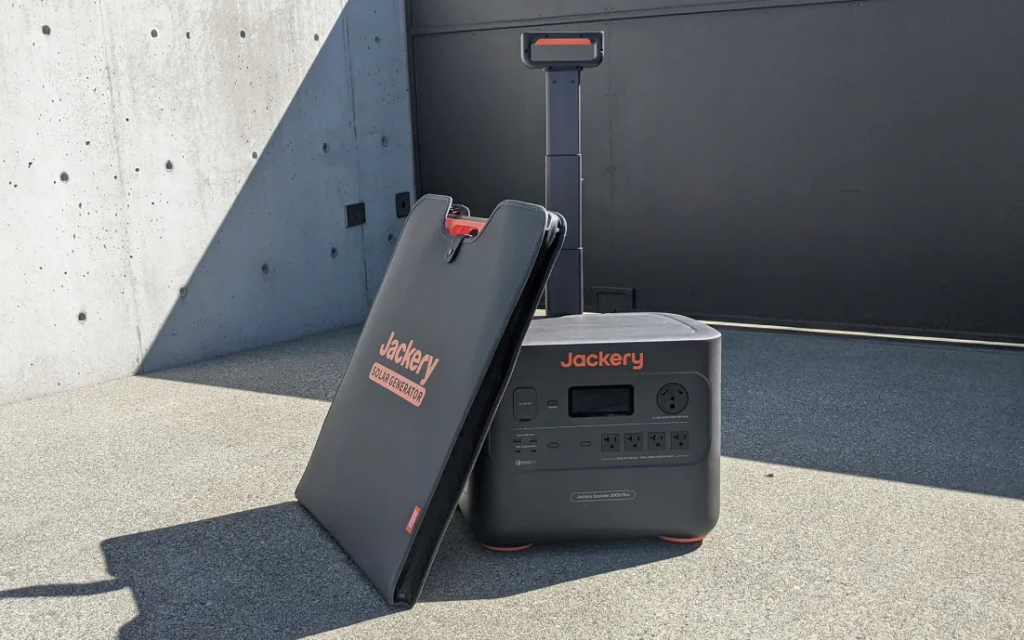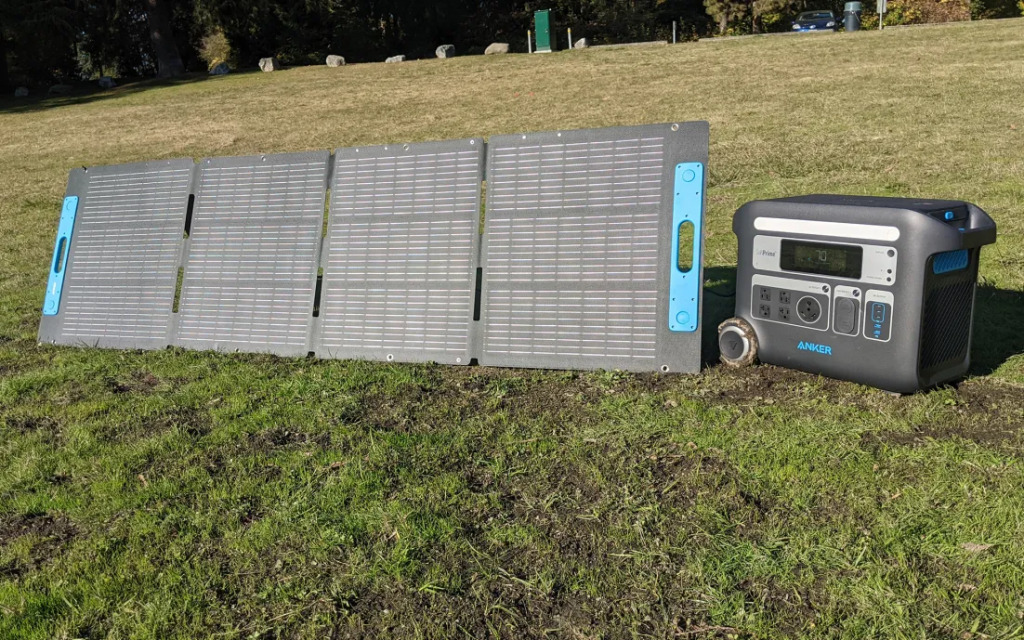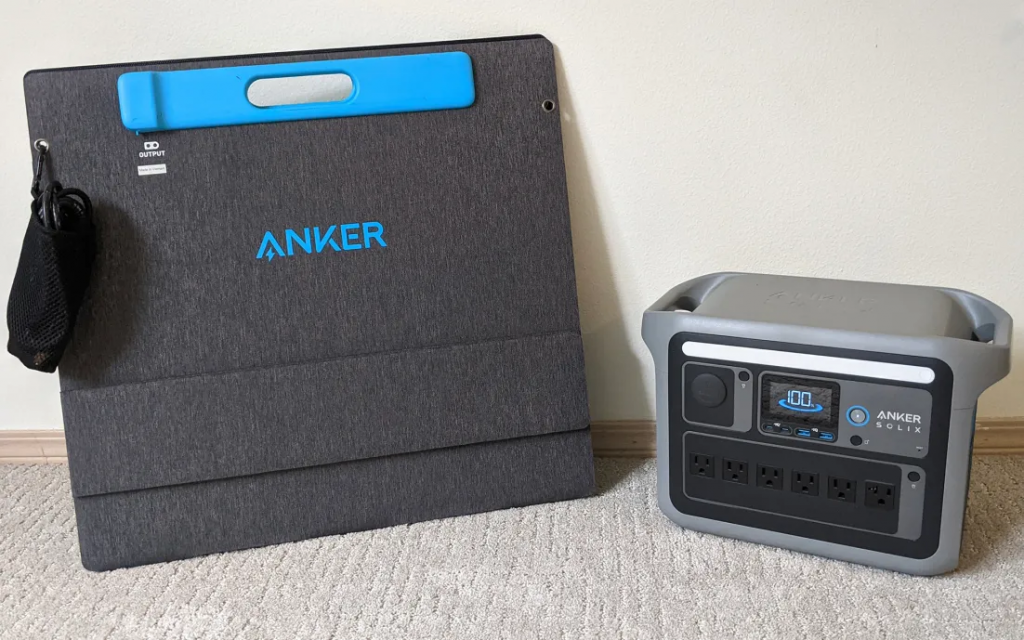Quizience is supported by you the audience. When you purchase through links on our site, we may earn an affiliate commission.
In the last five years or so, portable gas-fueled generators and electrical power stations have become increasingly essential. For campers, as well as semi off-grid living in RVs and converted vans, they give you an easy means of charging everything you need for day-to-day life–phones and laptops, lights, and even a mini appliance or two. While very few portable power solutions can realistically draw and store enough juice for a proper full-home backup, they’ve also become an important safeguard for folks dealing with power outages in the wake of extreme weather.
Amid the range of power stations, portable “solar generators” give you a way to draw in clean electric power from our most abundant resource, sunlight. Though using one effectively is a little more complicated than many people realize. Technically, the devices commonly sold as “solar generators” are actually electric “power stations,” or giant battery packs, with the ports you need to plug in solar panels for charging. A solar generator doesn’t actually generate solar power that you can use unless you have both. What’s more, most of these generators are large enough that it isn’t really feasible to charge up exclusively with solar power: More often than not, you’re going to wind up plugging it in to charge it, and using solar power to keep it going as long as possible.
Though even the best portable solar generators don’t offer an eco-friendly magic bullet to off-grid power needs, they’re helpful in many situations, including when you truly have no access to electricity or fuel. From highly portable options that are easy to carry on day-trips, to fairly heavy-duty models that can keep the lights on for days, these are the best portable “solar generators” we’ve tested to date.

Best for Home Backup: Jackery Solar Generator 2000 Plus
Pros
- Powerful solar panel (and potential to add on two more)
- Easy to use
Cons
- Casing on the power station is not the most durable
Report Card for the Jackery Explorer 2000 Plus
- Testing results extrapolated from the Jackery Explorer 1000 Plus
- Stated Capacity: 2043 watt hours
- Tested Capacity at 34W Draw: 1001 watt hours
- Tested Capacity at 380W Draw: 1760 watt hours
- Max Output: 3000 watts (6000 watt surge)
- Max Solar Input: 1400 watts
Report Card for the Jackery SolarSaga 200W (Package Includes Two)
- 184 watts generated by one panel in direct sunlight
- 49 watts generated by one panel in cloudy conditions
- Weight: 14 pounds per panel
- Portability: Great
- Ease of Use: Great
Jackery’s power stations have always stood out to me as being exceptionally easy to use, sort of like the iPhone of portable power stations. Their display panel is straightforward and intuitive, their bright-orange charging cables are color-coded to the power station itself. Anker and EcoFlow also do a great job in this area, but not quite at the level of Jackery. If you only expect to break out your power station once or twice a year, being able to quickly reorient yourself to how to use the unit is important.
The Explorer 2000 Plus has an output of 3000 watts, which is enough juice to power many modern refrigerators. Its battery life of 2043 watt-hours means it can supply that power for about a day before needing to be powered up again via a solar panel setup. During my testing of the Explorer 1000 Plus model, it proved to be about middle of the road for efficiency, providing more usable power for higher-wattage appliances on average. Because of a durability issue (a crack in the housing), I am not recommending this unit for individuals who expect to use their power station on the regular.
I originally tested the SolarSaga 200W solar panel as a full setup, with four panels plugged into a single power station. This test showed the full power of the array, which registered 650 watts of power generation on a sunny (albeit hazy) day. I recently retested a single panel in tandem with the rest of the units in this review, and under completely clear skies, the panel was even more impressive: It registered 184 watts of energy coming from a single panel. It was also a standout performer in cloudy weather, producing 49 watts of power. It’s also the only panel I’ve seen pull power out of low-light conditions (covered patio at dusk). I still haven’t found another solar panel of this size that performs at this level. It’s one of my top picks.
Like with the power station, Jackery makes this one exceptionally easy to use, with color-coded cables and connectors that you can use to pair additional panels with the power station.
In my opinion, the full setup with all four panels is a no-brainer if you have the space to lay all that out in your yard.

Best Solar for Off-Grid Living: EcoFlow Delta 2 Max + 220W Solar Panel
Pros
- Comparatively low price for the potential power generation
- Potential to add two (2) more solar panels with connector cables
- Power station is small in size for its power capacity
Cons
- Solar panel is comparatively difficult to set up
- Power station is 50.7 pounds, making it somewhat difficult to move
Report Card for the EcoFlow Delta 2 Max
- Testing results extrapolated from the EcoFlow Delta 2
- Stated Capacity: 2048 watt hours
- Tested Capacity at 34W Draw: 1380 watt hours
- Tested Capacity at 380W Draw: 1800 watt hours
- Max Output: 2400 watts (4800 watt surge)
- Max Solar Input: 1000 watts
Report Card for the EcoFlow 220W Bifacial Portable Solar Panel (Package Includes Two)
- 197 watts generated by one panel in direct sunlight
- 46 watts generated by one panel in cloudy conditions
- Weight: 21 pounds
- Portability: Great
- Ease of Use: Poor
The EcoFlow Delta 2 stood out from the competition in my testing of the best portable power stations for its overall efficiency in turning stored power into usable power as well as its low weight and easy-to-use interface. This backs up my impression of the Delta 2 Max, which has the same battery chemistry and design, just more watt-hour capacity. If you want a power station for a solar generator setup, it’s hard to do better than this.
Something different about the EcoFlow Delta 2 Max compared to other power stations I’ve looked at is that the six AC outlets (as well as the car outlet) are on the back side of the power station, with the solar and AC input ports. This can be a bit of a chore if you plan to swap out cords on a regular basis, but if you’re setting up a static off-grid system that you won’t be fiddling with too much, it has a nicer aesthetic.
While this power station, like others in my test, does come with an app, I don’t recommend using it as these have a significant power draw on the units.
It’s hard to find a better value than the EcoFlow 220W Bifacial Portable Solar Panel. It produces more power for its cost and weight than anything else I’ve tested. And its XT-60 connector cable means it’s compatible out of the box with other power stations, including the Anker SOLIX F2000.
The downside to this solar panel is that it is surprisingly difficult to set up, and pretty fiddly to adjust. It will also warp if left in storage long-term. While the other solar panels in this test rely on adjustable kickstand legs to optimize the angle of the panel toward the sun, the EcoFlow 220W Bifacial Portable Solar Panel takes a different approach: It uses the carrying case to support the panel. First, four clips attach to the four corners of the carrying case. You then clip into the panel itself, angling the carrying case at a wedge to create structure to the panel. The angle of the panel can be adjusted by zipping the carrying case up or down.
As you can see, this does work. I was able to set up the panel to face the sun at an optimal angle, but I found that zippering up the carrying case to adjust the angle of the panel once it was already in position was fairly difficult. I wouldn’t want to take down and set up the EcoFlow 220W Bifacial Portable Solar Panel on a regular basis, but I’m happy to do it once given its performance potential.

Best for RVs: Anker SOLIX F2000 Solar Generator
Pros
- Heavy-duty wheels excel on tough terrain
- RV plug
- Potential to add three more solar panels with connector cord
- Fully featured app
Cons
- Heavy
- Less powerful than other solar panels I’ve tested
Report Card for the Anker SOLIX F2000
- Stated Capacity: 2048 watt hours
- Max Output: 2400 watts (2800 watt surge)
- Max Solar Input: 1000 watts
Report Card for the Anker SOLIX 200W (Package Includes Two)
- 158 watts generated by one panel in direct sunlight
- 42 watts generated by one panel in cloudy conditions
- Weight: 20 pounds
- Portability: Great
- Ease of Use: Excellent
While several power stations that I looked at incorporated handles for ease of transport, the Anker SOLIX F2000’s were by far the most useful. While the Jackery’s telescoping handle never extended far enough to allow me to stand upright, it was comfortable to pull the Anker SOLIX F2000 by its handle for short distances. This included over very muddy ground during one of my early tests in the summer of 2023. If you regularly move your power stations more than 50 feet at a time, then the ease and comfort with which you can maneuver the Anker SOLIX F2000 makes it a smart choice.
In my test of the best portable power stations, the Anker SOLIX C1000, which uses the same battery chemistry as this model, was a top performer. It was very efficient at delivering large and small amounts of power. Unlike the C1000 model, the Anker Solix F2000 comes with an RV plug built in and a max wattage of 2400 watts (which I did test), equivalent to what a typical RV uses in a day.
The Anker SOLIX 200W Solar Panel was the simplest to use of the larger solar panels I looked at. I liked that it didn’t have a separate carrying case to mess with, and a simple carabiner and mesh bag combo did the trick to stash the relevant cable and ensure it didn’t become separated from the larger unit. Like all of these kickstand solar panel setups, it was a little cumbersome to use, but extra reinforcement on the three kickstand legs were useful, to an extent, when adjusting the panel to a lower angle.
While this solar panel isn’t quite as powerful as the Jackery SolarSaga 200W, it easily produced over 75 percent of its 200-watt capability during my tests — and the Anker SOLIX F2000 can support up to five of these chained together. Strangely, this panel does not have the same sundial component that the Anker SOLIX 100W does. However, after I set up the Anker SOLIX 100W, I adjusted the Anker SOLIX 200W panel to match its angle and immediately saw a 23-watt difference in the power input. Hopefully, Anker will simply add this accessory onto the 200W model in the future, but in the meantime, you can purchase a clip-on sundial separately.

Best Portable Solar Generator: Anker SOLIX C1000 Solar Generator
Pros
- Small power station is easy to move around
- Potential to add one more solar panel with connector cable
- User-friendly interface
Cons
- Smaller solar panel is less powerful than others on this list
Report Card for the Anker SOLIX C1000
- Stated Capacity: 1056 watt hours
- Tested Capacity at 34W Draw: 650 watt hours
- Tested Capacity at 380W Draw: 950 watt hours
- Max Output: 1800 watts (2400 watt surge)
- Max Solar Input: 600 watts
Report Card for the Anker SOLIX 200W
- 158 watts generated by one panel in direct sunlight
- 42 watts generated by one panel in cloudy conditions
- Weight: 20 pounds
- Portability: Great
- Ease of Use: Excellent
Whether you are living in a small apartment or a crowded house, there isn’t always a lot of space to stash gear that you aren’t using daily, including emergency gear. Despite the petite size of the Anker SOLIX C1000, it’s a surprisingly powerful power station. It can handle a hearty solar input load, up to 600 watts. It can also put out 2400 watts at 120 volts, which will allow you to power most anything, from a fridge, to a CPAP machine, to a microwave.
While Anker is boasting that this has an extremely fast turnover in the event of a power outage, which would theoretically allow you to keep critical systems going without a hitch, the reality is that the power it holds (1056Wh) and can generate at a time (200 watts) may not be enough to sustain you for a longer power outage. If there is medical equipment that is necessary for your or your loved’s one day-to-day survival, look into a larger power station with more solar input potential like the Anker SOLIX F2000. But if you’re looking for a unit that can keep everyone’s phones juiced with the option to turn on your coffee maker, then this one is hard to beat.
I had previously recommended pairing the Anker SOLIX C1000 with Anker’s 100-watt solar panel; however, they have made some changes to this model since I last tested it. The most noticeable change was the removal of the sundial feature, which is essential, in my experience, for maximizing the power output of a smaller unit. As such, I’m now recommending their larger 200W solar panel, described above in the recommendation for the best solar generator for RVs. While Anker’s 200W panel is more cumbersome than I would prefer, it will still provide plenty of power even when not optimally pointed toward the sun. Critically, even someone of a smaller stature can carry both the panel and the power station at the same time. If you’re interested in checking out the older model of the Anker SOLIX 100W, you can purchase a refurbished version of it on Amazon.
